Do you have a question about the peplink PEPWAVE MAX BR2 Pro and is the answer not in the manual?
Lists capabilities like Ethernet, cellular, Wi-Fi WAN, NAT, IPsec, health checks, and DNS.
Covers Wi-Fi AP, Ethernet ports, DHCP, static routing, and VLANs.
Explains PepVPN, IPsec VPN, PPTP server, and passthrough.
Describes outbound/inbound rules, intrusion detection, and content blocking.
Covers splash screens, login pages, and external linking for captive portals.
Details link load distribution and persistent routing for TCP/UDP services.
Covers configuring and managing Pepwave AP devices and reviewing AP status.
Explains quality of service, user groups, bandwidth control, and application prioritization.
Overview of the BR2 Pro model.
Describes the physical layout of the router's front and rear panels.
Explains the meaning of different LED statuses on the router.
Details the indicator lights for Wi-Fi AP and Wi-Fi WAN status.
Explains the status indicated by Green and Orange LEDs on LAN/Ethernet ports.
Explains easy installation without network changes and automatic bypass on power loss.
Describes how QoS prioritizes VoIP and videoconferencing traffic for clear calls.
Allows defining bandwidth policies for user groups to prevent network congestion.
Details deploying two routers for high availability and automatic failover.
Covers using USB LTE modems and smartphone tethering for WAN diversity.
Explains connecting remote clients using OpenVPN or L2TP with IPsec.
Allows checking SIM balance, processing prepaid cards, and configuring carrier services.
Lists required items like Internet access info, cables, modems, and computers.
Outlines steps for connecting computers to LAN ports and WAN ports.
Guides for basic and advanced LAN configuration.
Guides for basic and advanced WAN configuration.
Provides instructions and screw specifications for wall mounting.
Details mounting the router in a vehicle using provided brackets.
Provides a link to specific installation instructions for IP67 devices.
Explains how to configure LAN interface settings and manage VLANs.
Details enabling and configuring DNS proxy, caching, and local records.
Explains how to configure Bonjour forwarding for Apple's zero-config networking.
Describes configuring DHCP relay to forward requests to specified DHCP servers.
Allows configuring port speed, type, and VLAN for LAN ports.
Explains the captive portal's function as an internet access gateway.
Covers enabling, hostname, access mode, RADIUS, and LDAP authentication.
Details setting time and data caps for user internet usage.
Explains how usage quotas are reset daily or after a specified time.
Allows whitelisting networks to bypass the captive portal.
Allows whitelisting MAC/IP addresses for clients to bypass the captive portal.
Covers using the built-in portal or redirecting clients to a custom URL.
Explains customizing the portal with logos, messages, and terms & conditions.
Displays the status of WAN connections, including priority and connection state.
Details health check settings for Ethernet WAN connections.
Explains methods like Ping, DNS Lookup, HTTP for checking WAN health.
Covers enabling bandwidth monitoring, email notifications, and disconnection on usage limits.
Allows assigning static public IP addresses to WAN connections.
Explains configuring dynamic DNS services for WAN connections.
Details configuring DHCP connection method for automatic IP assignment.
Explains configuring a static IP address for direct ISP connection.
Details configuring PPPoE connection with login ID and password.
Explains PPPoE username, password, service name, IP address, and DNS servers.
Details configuring L2TP connection for secure remote access.
Covers cellular WAN connection status and details like IMSI, MEID.
Explains configuring cellular WAN connection name, enable, routing mode, subnet, and priority.
Details SIM card selection, network, band, data roaming, authentication, and operator settings.
Specifies which SIM card to use for cellular WAN with redundant SIMs.
Manages LTE/3G bands, optimal discovery, and band selection.
Enables data roaming and configures cellular authentication methods.
Configures APN settings, allowing auto-detection or custom entry.
Configures APN, login, password, and SIM PIN, with auto-fill or custom options.
Enables usage monitoring, email alerts, and disconnection at monthly allowance limits.
Defines thresholds for signal strength to determine connection status.
Configures connection behavior relative to other backup WANs.
Sets whether the WAN connection remains connected or disconnects in standby.
Configures automatic disconnection when the modem is idle.
Specifies health check methods for cellular connections (Disabled, Ping, DNS, HTTP, SmartCheck).
Details how to configure Wi-Fi WAN settings for internet connectivity.
Covers WAN connection name, schedule, standby state, MTU, and ICMP ping reply.
Details channel width, channel selection, data rate, and output power for Wi-Fi WAN.
Enables Wi-Fi roaming and provides options for additional settings.
Specifies if the Wi-Fi WAN connects to any open mode access points.
Sets the threshold for the number of missed beacons.
Explains disabling health checks and the implications for connection status.
Details configuring PING for WAN health checks and specifying ping hosts.
Details configuring DNS Lookup for WAN health checks and specifying DNS servers.
Details configuring HTTP for WAN health checks, including URL and matching strings.
Specifies the timeout in seconds for ping/DNS lookup requests.
Sets the time interval between ping or DNS lookup requests.
Defines consecutive ping/DNS lookup timeouts before connection is treated as down.
Sets consecutive successful responses needed to treat a down connection as up.
Configures dynamic DNS service providers, account details, and hosts.
Guides on creating Wi-Fi connection profiles for hidden-SSID access points.
Details settings for Wi-Fi connection profiles including security types (Open, WEP, WPA/WPA2).
Covers timeout, interval, retries for ping/DNS lookup requests.
Describes automatic public DNS lookups when primary DNS checks fail.
Details service providers, account name, password, and hosts for dynamic DNS.
Details protocol, channel width, channel selection, auto update, and output power.
Configures management VLAN, schedule, beacon rate, beacon interval, DTIM, RTS, fragmentation, and timeouts.
| Model | PEPWAVE MAX BR2 Pro |
|---|---|
| Category | Network Router |
| LAN Ports | 4 |
| Wi-Fi | 802.11ac |
| Cellular Connectivity | Dual SIM LTE |
| Power Supply | 12V DC |
| VPN | IPsec, OpenVPN |
| Firewall | Yes |
| Operating Temperature | -20 to 60 °C |
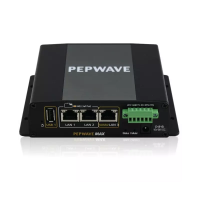
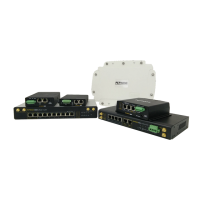
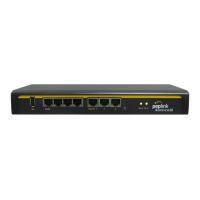
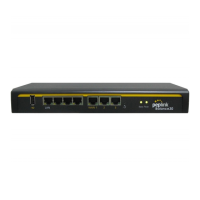




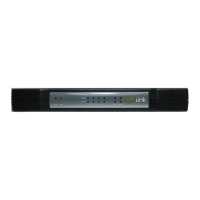


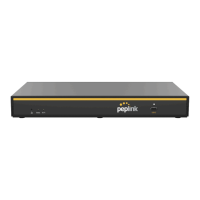
